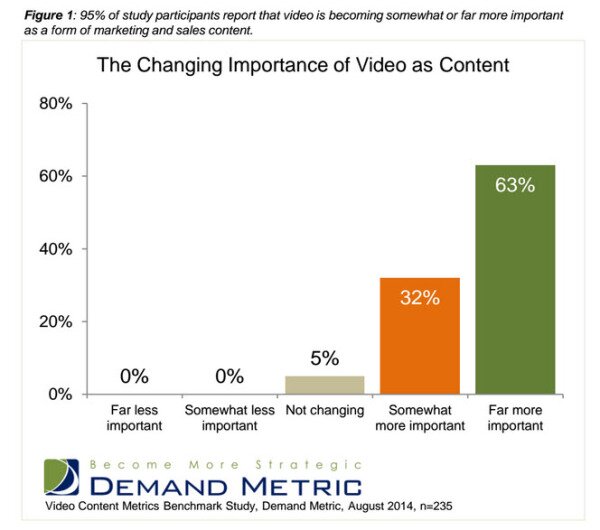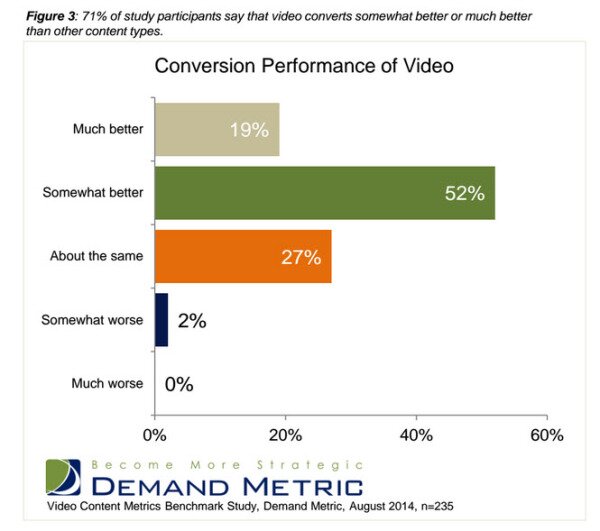Making Sense of Video Marketing with Vidyard’s Michael Litt
by Barb Mosher Zinck | September 22, 2014 12:11 pm
Vidyard, Brightcove, Kaltura, Wistia, uStudio, Ramp, Ooyala. These are all companies that created video marketing platforms. But they aren’t all the same. And that can be very confusing to the marketer who wants to use more video in their digital marketing strategies, but doesn’t know which technology is going to help them best.
Just take some time to look around, do a Google search – the online video marketing platform space is just plain confusing. A search for ‘video marketing platform’ only gets you one or two relevant vendors. A search for ‘online video platforms’ gets you another set of vendors. Is there a difference between the two? In order to get some basic level of understanding of this market, I spoke to Vidyard founder and CEO Michael Litt.
Litt offered one way to understand video platforms by defining two categories. First, he said the traditional video platforms enable you to host videos and serve ads around those videos. In the other group, he says the focus is more about marketing using videos, especially in a B2B environment. Videos are used for lead generation, and for sales and support. In this category, there’s no talk of serving ads. It may seem like a subtle difference, but that difference means a lot to a marketers.
The fact is, they all allow you to upload videos and serve them across different properties, you can customize video players, add different levels of security (some more restrictive than others), you can track analytics on the videos, share them across social networks and more.
Litt told me that last year Vidyard set out to define the video marketing platform category as a B2B directed, perfect your content and understand how it affects the customer lifecycle model. The company is making great strides. Their content marketing strategy definitely seats them top of mind when you are looking at solutions to support video marketing needs. But Litt also agrees that there is a certain amount of overlap between many of these platforms, and while the key idea is to “help business drive revenues through the use of online videos”, each one of these platforms looks at what that means differently.
So where does Vidyard’s vision and strategy come from?
Vidyard Beginnings
Vidyard was started by Litt and Devon Galloway. Litt and Galloway went to school together at the University of Waterloo (Ontario, Canada). At that time, Litt was interning at BlackBerry and had contacted a company to create some high-end instructional video that explained a complicated product (and installation process). It was very expensive, yet the video was poorly done. Litt had been making video himself for a several years for school, and for sports groups and associations he was involved with, so he and Galloway decided to make videos for companies on evenings and weekends in their own homes.
The two launched their own video production company called Redwood Media. Litt said that they could have done 4-5 of these video a year and lived happily ever after. They found it was easier to sell to smaller businesses than large enterprises and quickly became one of the go-to video productions companies. SMBs were spending between $5-10 k on a high quality video asset for their home page and/or top of funnel customer facing market campaigns.
The business was in its fourth year when, as part of their undergrad thesis at Waterloo, the two started to build technology that would help them understand how their customers’ customers were watching these videos. This information allowed them to improve the videos they created. Once the technology was functional they started selling their videos with a guarantee. They would guarantee that 60% of the audience will make it to the end of the video, or they would reproduce the video until it was true.
A guarantee that was difficult to turn down, soon customers wanted access to the data for themselves. Litt and Galloway built a user interface which they licensed to customers for $250/month that gave access to these video performance metrics.
Pretty soon Litt said the product became in higher demand than their video production services, so they went full steam ahead into the video marketing platform business and Vidyard was born. After spending four months in the Y Combinator program in Silicon Valley, they raised their C-round financing and subsequently built a team and company around the platform. This was 3.5 years ago.
Today Vidyard has 70 employees and over 1000 customers globally from the Fortune 500 down to SMBs. Although they are a Canadian company, 85% of their customer base is in the US, 10% in rest of world (EMEA and English-speaking Europe), and the rest – 4-5% – are Canadian.
So the key, for Vidyard, is helping organizations improve the quality of their videos, which in turn improves lead generation and revenue.
Who Uses Video in the Organization?
There are many uses for video in an organization, even when it comes to video developed for customers. Litt defined three groups that he sees using his platform:
1. The Marketing Team - Litt said that primarily, marketing produces video for the top of the funnel – awareness. These videos are designed to get people interested in the product or platform, or vision of the company. You’ll often find these videos on the homepage, or used in specific campaigns. But Litt has noticed that as marketers get more in tune with the purchasing cycle, they are getting involved with video further down the funnel. One area is video for customer testimonials. He’s even seen anti-customer testimonials where a customer has used a product, switched to another and then came back to the first product.
If you’re a marketer, you can view this quick presentation for some tips on how to create great videos.
2. The Sales Team – Sales people produce videos that help with the sales process – videos for demos, pre-recorded webinars where someone walks through the use of a product or talks about specific use cases. Litt has seen instances where clients have used the analytics to help sales people improve on their videos, but these are less prominent.
3. The Support Team – After the sale is made, there’s still plenty of opportunity to take advantage of video. Litt is seeing accounts given to support teams to produce various types of support videos, like how-to’s.
One of the big differences with each group is how they use the analytics data. Marketers look at the analytics to help improve the content of videos produced in the future. A content marketer will look at things like attention span and try to see where the viewer has lost interest to help them understand how to improve a video. For example, maybe viewers thought the intro was too long because there’s a huge drop off, so the marketer will tighten up the intro, tell a different message or include something that grabs their attention in the first 5 minutes of the video.
Salespeople, however, are looking at who is going to buy the product based on how much they’ve viewed. The most video content viewed, the higher the lead score, telling them this is someone they need to engage with.
The Growing Importance of Video in Content Marketing
In the list of content types for content marketing, video is becoming more and more important to use. A recent Demand Metric report indicates how important video content has become for both sales and marketing.
 Even if your videos are not made of the absolute highest production quality, they can still be more effective than text-based content. The Demand Metric report shows video does lead to better or somewhat better conversions than other content types.
Even if your videos are not made of the absolute highest production quality, they can still be more effective than text-based content. The Demand Metric report shows video does lead to better or somewhat better conversions than other content types.
How do you measure the effectiveness of videos? There are different approaches, some more sophisticated than others. Some examples given in the report:
- Basic: views, shares
- Intermediate: average viewing duration
- Advanced: views by embed, drop-off points, attribution to sales
You may not be ready to get to advanced measurement of your videos, but you should have a plan in place to move there. You should also look at how you can incorporate video analytics into your marketing automation and CRM systems to help you understand how they affect lead generation and sales processes.
Whatever you do, make sure you are looking at your options to incorporate video into your content marketing plan. Think about where a video can improve an explanation of something, or generate interest in your brand, or something related to your brand.
Use a video marketing platform to serve your videos and track their performance. Even if you start with something as simple as YouTube just to get a feel for what you can do, you’re making progress. Look at the different platforms that meet the needs of your short-term and long-term goals for video and test drive one or two to see which one works better for you.
Stay tuned for some in-depth views of some of these video marketing platforms over the next several months.
Share and Enjoy
Source URL: https://digitaltechdiary.com/making-sense-video-marketing-vidyard/1185/
